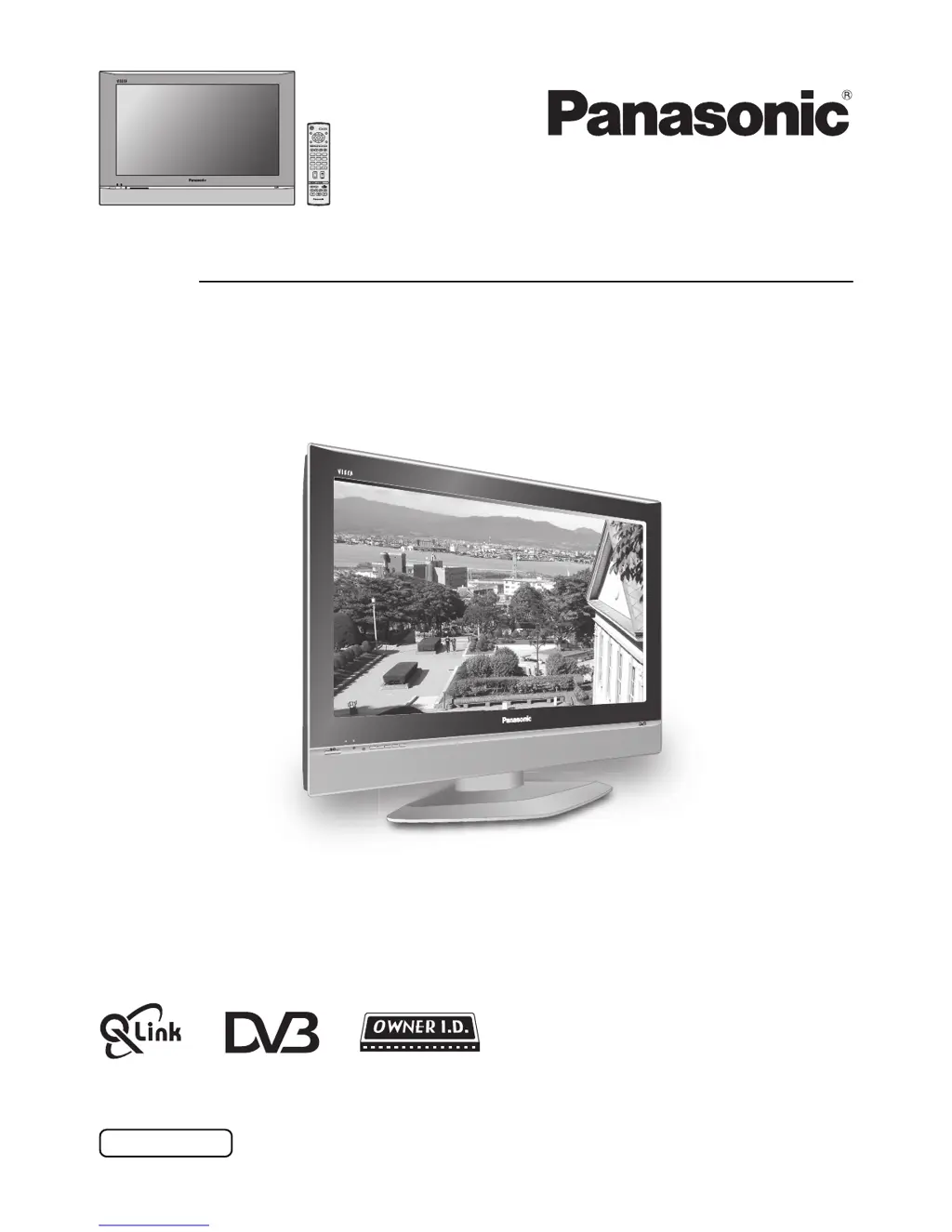
Do you have a question about the Panasonic TH-42PE50B and is the answer not in the manual?
Covers precautions against dripping, splashing, removing covers, and electrical hazards.
Details on the three-pin plug, earthing requirements, and fuse replacement procedures.
Advises on accessory use, unstable surfaces, ventilation, and electromagnetic interference.
Covers ventilation, foreign objects, power cord care, and disconnection safety.
Instructions for cleaning the display panel and the TV cabinet using suitable cloths.
Guidance on what to do if picture/sound problems or smoke occurs during operation.
Lists items to check upon unpacking the TV to ensure all are present.
Step-by-step guide for inserting batteries into the remote control.
Instructions for securely connecting the TV's AC power cord to the wall socket.
Guidance on using bands and clamps for tidy cable routing and management.
Overview of connecting external devices like satellite receivers and VCRs/DVDs.
Instructions for connecting VCRs, DVD recorders, and satellite receivers via Scart.
Steps to power on the TV and initiate automatic channel tuning.
Information on downloading programme data to VCRs/DVD recorders via Q-Link.
Guide to setting up a security code and personal details for theft tracing.
How to access and navigate DVB and Analogue programme listings.
Explanation of buttons on the remote control for TV operation and menu navigation.
Description of buttons and functions located on the TV's front panel.
How to use the MENU, Cursor, OK, and EXIT buttons for navigation.
Explanation of the on-screen help feature that appears within menus.
Details on adjusting Contrast, Brightness, Colour, Sharpness, and Tint.
Explains Colour balance, P-NR, MPEG NR, and 3D-COMB features.
How to set Bass, Treble, and Balance levels for optimal sound output.
Explains NICAM stereo, Music/Speech modes, and Ambience effects.
Configuring Q-Link for communication and AV2/AV3 output settings.
Covers Teletext, Off timer, Side panel, Power save, and Owner ID settings.
Introduction to analogue tuning options like Programme edit and Auto setup.
Accessing and customizing the TV's programme list settings.
Steps to add new programme channels or remove existing ones from the list.
How to rearrange the order of channels in the programme list.
Process for assigning custom names to channels in the programme list.
How to lock specific channels to prevent unauthorized access.
Instructions for automatically retuning stations after moving house.
Important considerations and data erasure warnings for auto setup.
Step-by-step guide to manually tuning individual analogue channels.
How to tune channels using the TV's front panel controls.
Procedure for entering personal details and a PIN for security purposes.
How to view or alter previously entered Owner ID details.
How to reset the TV to its original condition, clearing all tuning data.
What happens during the next power-on after a shipping condition reset.
Introduction to the DVB Setup menu and its main functional categories.
Covers Timer Programming, Profile Edit, Child Lock, and DVB Tuning.
How to program the TV to record DVB programs automatically.
Important notes on deleting, editing, and managing timer recordings.
Options for setting recording frequency such as Daily, Weekly, MO-SA.
Information on recording encrypted DVB programs using CI modules.
How to select and organize favourite channels into a Profile list.
Procedures for editing profile names and managing channels within a profile.
How to lock specific DVB channels or all channels using a PIN.
Steps to change the existing Child Lock PIN for security.
How to automatically rescan for and tune new DVB channels.
Adding new DVB services and checking the signal quality.
Accessing functionality contained on a Common Interface Module.
Settings for Subtitles language, System Update, and Display Timeout.
Instructions for installing and managing Common Interface Modules.
How to use on-screen commands and coloured buttons with CI modules.
Setting up the TV for automatic software downloads while in standby.
How to manually search for and download new software versions.
How to access and navigate the DVB TV Guide in Landscape/Portrait modes.
Setting timer recordings for future programs directly from the EPG.
How the information banner appears and how to navigate its content.
Turning DVB subtitles on and off using the STTL button.
How Q-Link enables communication and control between TV and recorders.
Using the DIRECT TV REC button for immediate program recording.
How to select different aspect ratio modes like 16:9, 4:3, Zoom.
How the TV automatically detects and adjusts the picture aspect ratio.
Explanation of 16:9, 14:9, and 4:3 aspect ratio displays.
Details on Zoom1, Zoom2, and Zoom3 picture adjustments.
Using the TV remote to control functions of VCRs and DVD recorders.
Controls for Play, Stop, Skip, Pause, Rewind, and Record operations.
How to access and use teletext features in analogue mode.
Methods for selecting teletext pages: List mode, FASTEXT, numeric.
Storing favourite teletext pages for instant recall.
Navigating multiple sub-pages within teletext information.
Differences and features of DVB teletext compared to analogue teletext.
Using on-screen commands and coloured buttons for DVB teletext.
How to switch between different AV inputs using the TV/AV button.
Notes on reduced menu options available when the TV is in AV mode.
How to connect speakers or amplifiers to the audio output terminals.
Details on connecting external devices via Scart and Component terminals.
Common symptoms like snowy picture, no sound, and their troubleshooting checks.
Warning about permanent after-images and the TV's sleep feature.
What to do if no DVB channels are found after an Auto Setup.
Causes and solutions for blocky interference and poor signal quality.
Detailed pin configurations for AV1, AV2, and AV3 Scart terminals.
Table of supported horizontal and vertical frequencies for component signals.
Details on power source, consumption, and plasma panel specifications.
Speaker, audio output, receiving systems, and terminal specifications.
Contact information for customer support and product information.
Information on ordering accessories and purchasing extended guarantees.
Guidelines for environmentally responsible disposal of electrical and electronic equipment.
Declarations of conformity and space for recording model and serial numbers.
